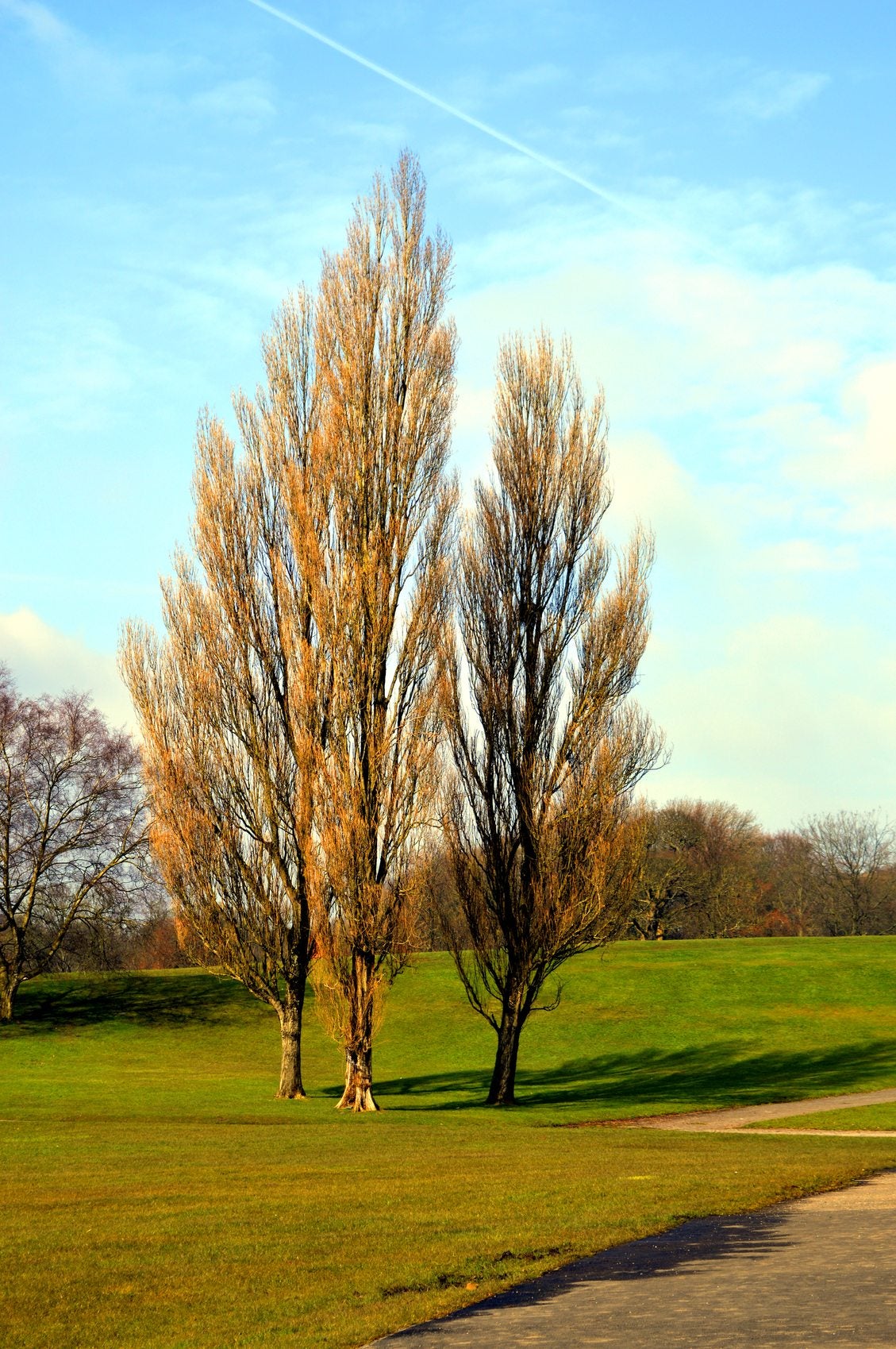Lombardy Poplar Facts – Guide To Lombardy Poplar Care In The Landscape


Lombardy poplars (Populus nigra 'Italica') are the rock stars of the home garden, living fast and dying young. Many homeowners select them when they need a quick privacy screen but come to regret it later. If you read up on Lombardy poplar tree facts, you’ll find that these trees offer advantages but also many disadvantages. For more information about Lombardy poplars in landscapes, read on.
What is a Lombardy Poplar?
What is a Lombardy poplar? This species of poplar is tall and thin; its shape is columnar. It grows well in U.S. Department of Agriculture plant hardiness zones 3 through 9a. Lombardy poplar trees grow rapidly. They could grow to a mature height of up to 60 feet (18 m.), spreading around 12 feet (4 m.). However, most are killed by canker disease within 15 years, so large specimens are hard to find. Lombardy poplar tree facts tell you that the trees are deciduous. Their diamond-shaped leaves change from bright green to blazing golden yellow, then they fall. Lombardy poplars in landscapes develop small flowers in spring. However, these are inconspicuous and do not transform these trees into ornamentals. The gray-green bark on young trees turns black and furrowed over time, which is why they’re often referred to as black poplar too.
Lombardy Poplar Care
If you decide to grow Lombardy poplar trees, plant them in a site with full sun. The trees also need soil with good drainage but accept either acidic or alkaline soil. Lombardy poplar care includes cutting back the multiple suckers. These appear at the base of the trees, both near to and far from the tree. Roots are considered invasive.
Lombardy Poplar Pros and Cons
Despite its quick growth and attractive fall color display, Lombardy poplars have disadvantages. The primary disadvantage is the tree’s susceptibility to diseases and pests. Lombardy poplar is very susceptible to stem canker disease. It is virtually impossible to prevent or treat this disease. Stem canker disease reduces the average life span of the Lombardy poplar to 10 or 15 years. The only thing you can do to help combat the disease is to trim off and burn infected branches. Lombardy poplars in landscapes are also susceptible to other diseases. These include foliage diseases such as rusts, leaf spots, and powdery mildew. They are also magnets for pests, including:
- Caterpillars
- Aphids
- Willow beetles
- Borers
- Scale
If you want columnar, narrow-crowned trees, consider ‘fastigiate’ cultivars in species like European hornbeam, Armstrong maple, and Leyland cypress.
Sign up for the Gardening Know How newsletter today and receive a free copy of our e-book "How to Grow Delicious Tomatoes".

Teo Spengler is a master gardener and a docent at the San Francisco Botanical Garden, where she hosts public tours. She has studied horticulture and written about nature, trees, plants, and gardening for more than two decades, following a career as an attorney and legal writer. Her extended family includes some 30 houseplants and hundreds of outdoor plants, including 250 trees, which are her main passion. Spengler currently splits her life between San Francisco and the French Basque Country, though she was raised in Alaska, giving her experience of gardening in a range of climates.